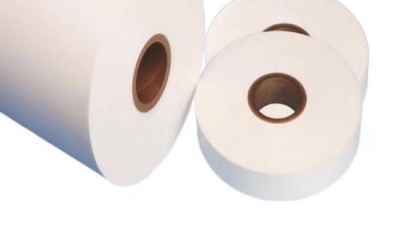7 Essential Tips for Choosing the Right H Class Insulation for Your Industrial Needs
Table of Contents
- Understanding the Importance of H Class Insulation in Industrial Applications
- Common Issues Faced with H Class Insulation Types
- Key Factors to Consider When Selecting H Class Insulation
- Comparative Analysis of Different H Class Insulation Materials
- Best Practices for Installing and Maintaining H Class Insulation
- How to Troubleshoot Problems with H Class Insulation in Your Facility
- Understanding the Benefits of 6630/6630A B-Class DMD Flexible Composite Insulation Paper for Efficient Electrical Insulation
- FAQS
- Conclusion
- Related Posts
As industries are constantly changing and growing, we've seen a real boost in the demand for specialized materials like H Class Insulation. It’s pretty clear that insulation plays a huge role in making sure electrical systems work efficiently and last longer. According to a report from MarketsandMarkets, the global market for electrical insulation materials is expected to hit around USD 15.9 billion by 2025, growing at about 5.5% annually. That's a pretty significant jump and really underscores how crucial it is to pick the right insulation, especially for those high-temperature setups where H Class Insulation is a total game-changer.
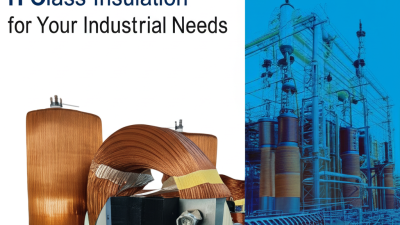
Speaking of which, Sichuan D&F Electric Co., Ltd.—founded back in 2005—is a name you can trust when it comes to making and supplying electrical connection parts and insulation components. They’ve been providing custom solutions that really match what the industry needs right now. By understanding what H Class Insulation is all about, businesses can get a step ahead in this competitive market—making sure their operations stay efficient, durable, and up to date with all the industry standards.
Understanding the Importance of H Class Insulation in Industrial Applications
H Class insulation really plays a key role in industrial settings because of its excellent ability to handle high temperatures and resist heat. Did you know that, according to the International Energy Agency, almost 20% of the world's energy goes into industrial processes? That highlights just how important good insulation really is. Not only does it boost energy efficiency, but it also helps extend the lifespan of equipment by reducing thermal stress. Usually, H Class insulation can handle temperatures up to around 180°C, making it perfect for industries like manufacturing, petrochemicals, and food processing?
When you're selecting H Class insulation, there are a few things to keep in mind—like how well it conducts heat and how resistant it is to moisture. Here’s a quick tip: first, think about your specific temperature needs. Different H Class materials perform better in certain conditions. For instance, fiberglass insulation is pretty versatile for general use, while mineral wool is a rockstar when it comes to fire resistance. Next, consider whether your environment has exposure to moisture or chemicals—some insulation types are better suited to handle those challenges, and that can make a big difference in how long they last. And finally, don’t hesitate to reach out to industry pros—they can help you pick the right insulation that meets your operational needs and safety regulations, making sure everything runs smoothly and safely in your facility.
Common Issues Faced with H Class Insulation Types
When you're choosing H Class insulation for industrial use, it’s really important to understand some of the common challenges that come with different types of insulation. I recently read that about 75% of buildings across Europe are energy-inefficient, which is pretty shocking! That puts a big strain on energy resources and also hits organizations and homeowners in the wallet. So, picking the right insulation isn’t just about meeting thermal standards — it’s also about making sure it’s energy-efficient to help cut costs and ease the financial burden.
One issue that’s been gaining attention is plastic pollution. Traditional insulation materials often add to waste, which isn’t great. Luckily, there's some pretty cool research happening right now — scientists are finding ways to turn recycled stuff, like plastic banners, into high-performance insulation. That’s a win for reducing waste and making insulation more sustainable. Plus, using advanced thermal interface materials can help dissipate heat passively, giving better thermal management in industrial setups.
As people focus more on eco-friendly building solutions, choosing the right H Class insulation means really understanding the environmental impact, how well it performs thermal-wise, and how durable it is over time. Industries are looking to align with sustainability goals, so making smart, informed decisions about insulation isn’t just good for the planet — it’s also great for saving money and energy in the long run.
Key Factors to Consider When Selecting H Class Insulation
When you're choosing H Class insulation for industrial projects, there are a few important things you really want to keep in mind to make sure everything runs smoothly and sticks to industry standards. First off, thermal performance is a big deal; you want insulation that can handle temperatures of at least 180°C without breaking a sweat—which is crucial for those tough, real-world conditions. Did you know that, according to the Thermal Insulation Manufacturers and Distributors Association (TIMDA), using insulation with better thermal resistance can actually cut energy costs by over 30%? That’s a pretty solid reason to go for it, financially speaking.
Another key point is fire resistance. H Class insulation needs to meet certain flammability standards set by the National Fire Protection Association (NFPA). It’s all about safety, but it also helps the overall performance of your facility. And don’t forget about how well the insulation plays with other elements it might come into contact with—like chemicals or moisture. There's a study in the Journal of Protective Coatings & Linings that shows choosing insulation resistant to environmental factors can really boost its lifespan—by up to 50%! That means less hassle, fewer repairs, and less downtime for your operation.
7 Essential Tips for Choosing the Right H Class Insulation for Your Industrial Needs
| Tip Number | Key Factor | Description | Example Material |
|---|---|---|---|
| 1 | Temperature Resistance | Ensure the material can withstand the operating temperature of the application. | Mineral Wool |
| 2 | Moisture Absorption | Select insulation that minimizes moisture absorption to prevent thermal degradation. | Foam Glass |
| 3 | Fire Resistance | Choose materials with high fire ratings for safety. | Calcium Silicate |
| 4 | Mechanical Strength | Consider insulation that can withstand mechanical stresses in industrial settings. | Fiberglass |
| 5 | Thermal Conductivity | Lower thermal conductivity materials provide better insulation performance. | Aerogel |
| 6 | Environmental Impact | Select materials that are environmentally sustainable and recyclable. | Recycled Cotton |
| 7 | Cost Efficiency | Evaluate the total cost of ownership including installation and maintenance. | Polyurethane Foam |
Comparative Analysis of Different H Class Insulation Materials
When you're trying to pick the right H Class insulation for industrial settings, it’s really important to do a bit of homework and compare different materials. Basically, H Class insulation is known for handling really high temperatures — usually up to around 180°C (or 356°F). From what I’ve seen, popular options like fiberglass, ceramic fiber, and mineral wool are often chosen because they’re great at staying stable under tough conditions and can even help save energy.
Take fiberglass, for example — it has a thermal conductivity of about 0.035 W/m·K. That’s pretty efficient for lots of uses. On the other hand, ceramic fiber can handle even higher temperatures and has an even lower thermal conductivity, which means it can cut down on energy costs pretty significantly, especially in really hot processes. Some industry reports even suggest that switching from regular insulation to ceramic fiber could boost energy efficiency by up to 20%.
And then there’s mineral wool — it’s kind of the all-in-one package, offering decent thermal resistance plus soundproofing. If you need to keep things cool and quiet, it’s a solid choice. Studies show mineral wool can absorb sound with coefficients as high as 0.95, which helps reduce noise in busy production areas. As companies lean more toward sustainable practices and try to up their efficiency, understanding the ins and outs of these materials becomes more than just useful — it’s pretty much essential for making smart choices.
Best Practices for Installing and Maintaining H Class Insulation
When you're installing H Class insulation in industrial setups, it's really important to stick to some tried-and-true practices to make sure it works well and lasts a long time. First off, making sure it fits just right is a big deal. The insulation needs to fit snugly around all pipes and equipment — no gaps allowed, since those can let heat escape or let moisture sneak in. Using good quality adhesives and sealants helps keep everything securely in place, so it doesn’t shift or break down over time.
And honestly, keeping up with regular maintenance makes a huge difference. Regular inspections for any signs of wear—like cracking, peeling, or water spots—can help catch problems early before they turn into bigger issues. It’s also a good idea to wipe down or clean the insulation now and then to get rid of dirt and dust, which can mess with its ability to insulate properly. Setting up a routine to check and maintain the insulation means it'll keep performing at its best, saving energy and cutting down on operational costs in the long run.
How to Troubleshoot Problems with H Class Insulation in Your Facility
When it comes to H Class insulation, troubleshooting any issues that pop up is super important for keeping your industrial setup running smoothly. One thing you’ll often run into is moisture buildup, which can really mess with how well your insulation works. To keep that in check, make sure your insulation is installed properly—no gaps or leaks in the areas it covers. Doing regular inspections is also a smart move; catching small problems early can save you from bigger headaches down the line.
Another common hiccup is thermal bridging—that’s when heat manages to sneak past the insulation. To prevent this, it’s a good idea to use continuous insulation systems that cover the whole surface without any gaps. That way, you’ll help keep the temperature steady and save some energy too. As you troubleshoot, don’t forget to keep your maintenance plan up to date. A little consistent upkeep—like cleaning and performance checks—can really go a long way in making sure your H Class insulation stays in top shape.
And seriously, choosing the right insulation isn’t just about picking any old material. Think about what your facility actually needs in terms of thermal resistance. Plus, pay attention to other stuff like fire safety and moisture resistance—that’s key for making sure your operations are both safe and efficient.
H Class Insulation Performance Comparison
This chart compares the thermal conductivity of five different H Class insulation materials, essential for making informed decisions based on industrial needs.
Understanding the Benefits of 6630/6630A B-Class DMD Flexible Composite Insulation Paper for Efficient Electrical Insulation
The 6630/6630A B-Class DMD flexible composite insulation paper represents a crucial element in modern electrical insulation technology. This specialized product, made up of a three-layer laminate combining polyester film and polyester non-woven fabric, offers superior thermal resistance classified as Class B. Such structure not only enhances the material's overall durability but also contributes to its efficiency in a variety of electrical applications.
One of the standout benefits of this insulation paper is its flexibility. The combination of polyester film and non-woven fabric allows it to conform easily to different shapes and surfaces, making it ideal for applications where traditional rigid insulation materials may fail. This adaptability ensures that electrical components are well-protected, reducing the risk of damage from heat and increasing the longevity of the equipment. Moreover, its robust thermal resistance makes it suitable for high-performance environments where temperature fluctuations are prevalent.
Additionally, the 6630/6630A insulation paper offers excellent electrical insulation properties, making it a preferred choice for manufacturers looking to enhance the safety and efficiency of their products. By leveraging the advantages of this innovative insulation solution, businesses can improve their production processes and achieve better overall performance in their electrical systems.
FAQS
: H Class insulation is essential in industrial applications due to its superior thermal resistance and capability to withstand high temperatures, operating up to 180°C, making it suitable for sectors such as manufacturing, petrochemical, and food processing.
Proper H Class insulation enhances energy efficiency by reducing thermal stress on equipment, which prolongs its life and decreases overall energy consumption, addressing the energy demands of industrial sectors.
When selecting H Class insulation, consider factors such as thermal conductivity, moisture resistance, specific temperature needs, and potential exposure to chemicals to ensure optimal performance and longevity.
Common issues include energy inefficiency in buildings, concerns about plastic pollution from conventional insulation materials, and the need for insulation that meets both thermal performance standards and sustainability goals.
Research is being conducted to repurpose recycled materials, like plastic banners, into high-performance insulation solutions, which not only reduce waste but also promote sustainability in insulation practices.
Incorporating advanced thermal interface materials can provide additional passive heat dissipation benefits, improving overall thermal management in industrial settings.
Consulting with industry experts ensures that the insulation choice aligns with operational requirements and regulatory standards, optimizing safety and performance in facilities.
Moisture resistance significantly affects the longevity of insulation materials; some materials are more resistant than others, which can impact performance and durability over time.
Selecting the right H Class insulation is crucial for aligning with sustainability goals, as informed choices can lead to significant economic and energy savings while minimizing environmental impact.
Conclusion
When it comes to industrial applications, picking the right H Class Insulation is pretty important if you want your equipment to run smoothly and last longer. These insulations are great because they handle high temperatures really well, which is a big deal in certain environments. I gotta say though, figuring out which one to go with isn’t always straightforward—there are common hiccups like materials breaking down or not having enough testing done beforehand. Things like making sure the materials get along, the way you're installing it, and how you take care of it afterward all really impact how well the insulation works over time.
To make things easier, it’s a good idea to compare different H Class Insulation options. Looking at the pros and cons of each can help you make smarter choices. And honestly, following best practices during installation and routine maintenance can really boost performance. If something does go wrong, knowing how to troubleshoot properly can save you a lot of trouble. At Sichuan D&F Electric Co., Ltd., we totally get how crucial reliable insulation parts are in industrial settings—and we're here to provide top-quality solutions that fit exactly what you need.
Related Posts
-

How to Achieve Maximum Energy Efficiency with H Class Insulation Solutions
-

Exploring the Unique Properties and Applications of Best Nomex T410 Film: A Comprehensive Guide for Buyers
-
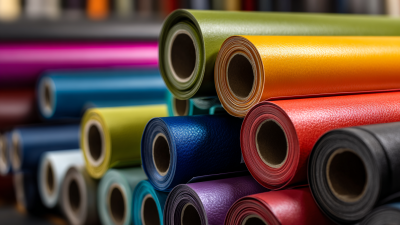
Essential Checklist for Choosing the Right Glass Polyester Laminate for Your Project
-
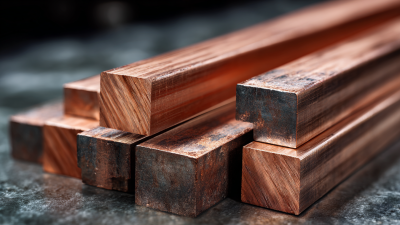
The Future of Innovation in the Copper Aluminum Busbar Market
-
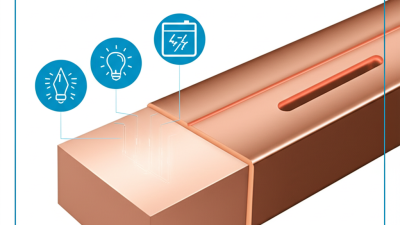
Unlocking the Advantages of Bare Copper Strip in Electrical Applications for Energy Efficiency
-
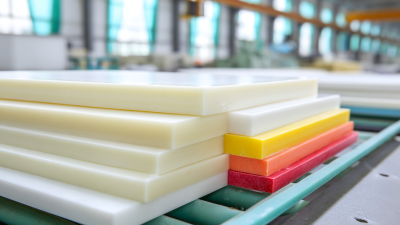
The Future of China Epoxy Glass Fiber Sheet in Global Markets






